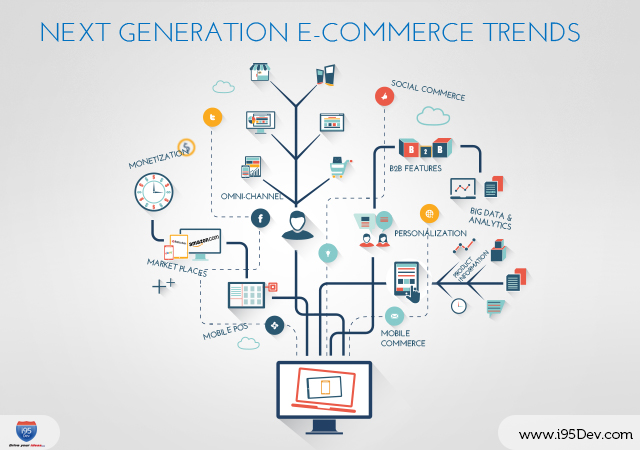eBook -Next-Generation
eCommerce trends

In a rapidly evolving digital marketplace, Internet and mobile have had a dramatic impact on both our personal and professional lives. It has changed the way we shop, connect and work. Retail businesses and commerce are no exceptions to this trend. Gone are the days when retailers had to invest in setting up brick-and-mortar stores customers had to visit to make a purchase. Today, more and more people prefer shopping online. Not only is online shopping faster and more convenient, but it also provides consumers with options that previously were not possible. For instance, online shopping has made it easier for consumers to research the product, compare prices, read customer reviews and consult their friends and family. It has also allowed buyers to shop from a number of merchants from various locations, instead of being limited to the sellers in their neighborhood or local mall.
Consumers are increasingly taking charge, leveraging different sources of information and channels to optimize their shopping experience. As a consequence, they expect retailers to keep pace or risk becoming extinct. After extensive research, we have identified a few trends that will change the face of e-commerce in the coming months and years. Each presents challenges for retailers and other businesses who must adopt them to remain competitive.
M-Commerce is the Future
With the surge in affordability and popularity of smart phones, tablets and other mobile devices, the preferred interface for online shopping has changed completely and irrevocably. Shoppers are using these devices not only to browse, but also to shop and place orders. Ignoring or dismissing this trend will undoubtedly affect your future business. To successfully embrace this reality – and even generate more sales – ensure your online store is user-friendly for all online channels, especially for mobile phones and tablets.
Big Data & Analytics
Retail businesses can get more out of their investment in e-commerce by leveraging the reporting and analytics of the e-commerce system to convert the large amount of data collected into actionable analytics. Business managers can use the data for Demand Planning (using order history and inventory levels), analyzing customer shopping trends, payment terms negotiation/innovation (using order and payment history), to manage payouts to sales people (using order history), etc.
Omni-channel Imperative
With the advent of next-generation e-commerce, customers want to shop using multiple channels simultaneously, and they expect consistency while doing so. Omni-channel retailing requires seamless integration between all channels, digital and brick-and-mortar, so that shoppers can shop the way they want with little or no inconvenience. With this strategy, retailers can create both exceptional shopping experiences as well as a deeper engagement with shoppers.
For more information on trends like mobile commerce, big data & analytics, Omni-channel commerce, and others, click here to download our eBook on Next-Generation E-Commerce Trends



